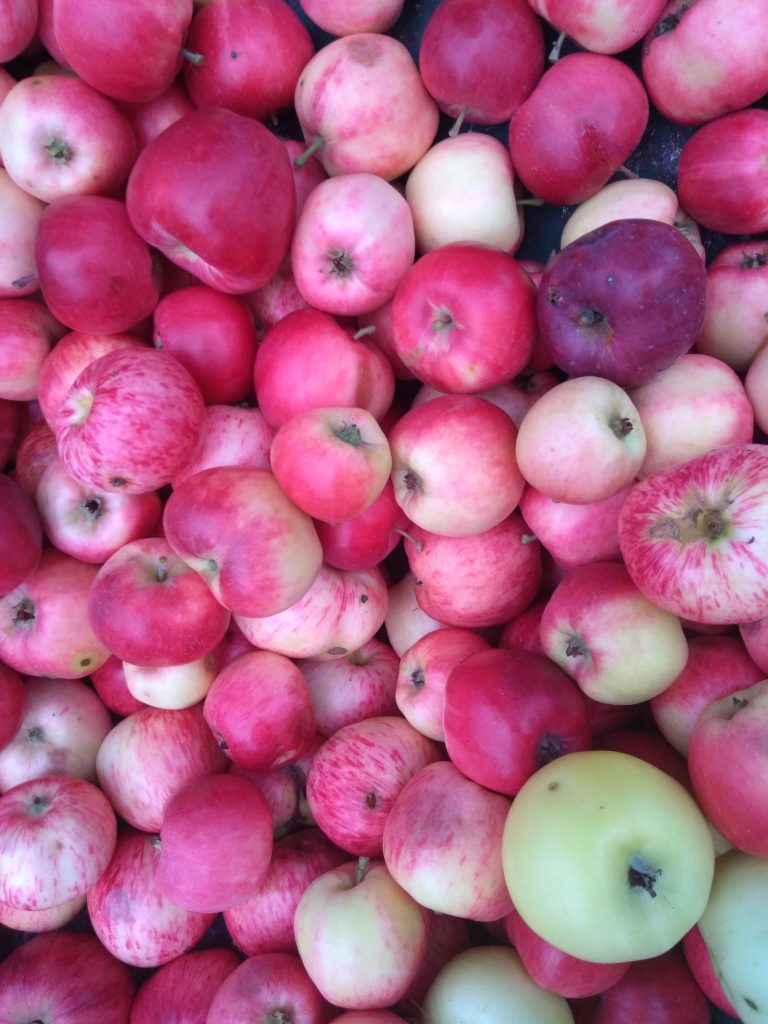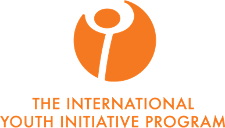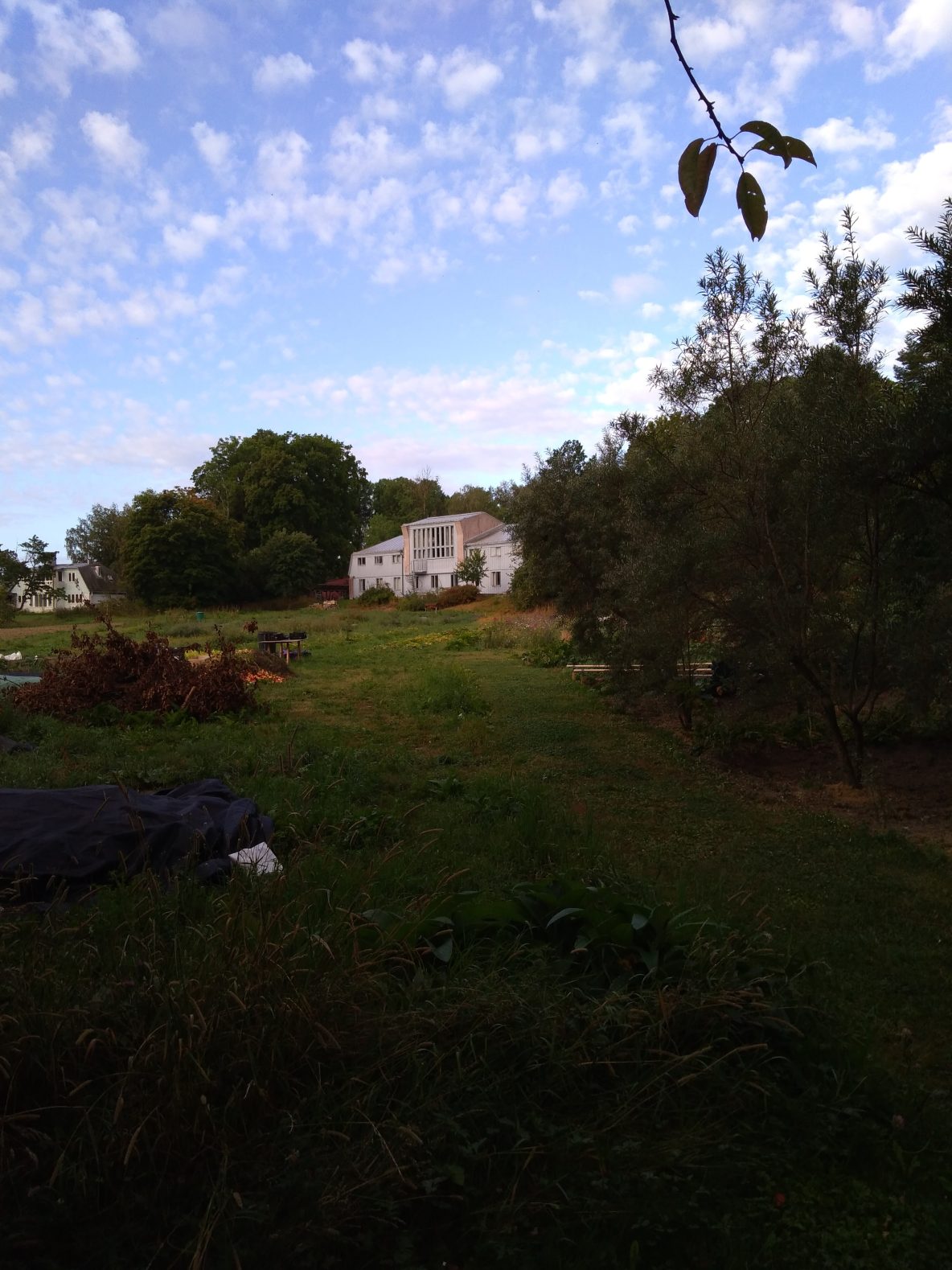Dear friends of YIP,
The new YIP year has started and Ytterjärna has welcomed YIP14 with warm sunshine, trees full of apples and migrating geese.
This place is now becoming home to 35 new participants, waking up to a warm orange sun rise above the Fjord and going to bed with a purple sunset behind the Kulturhouse.
After a week of focusing on getting to know the people, the program, and the place, we are now fully into the Global Realities block.
While the morning courses are a different topic each week on one of the current global realities, the afternoons are a space for creativity. In the afternoons, the participants are busy with movement, personal practices and creative sessions such as textiles, art therapy, wood work, gardening and metal work.
In this newsletter Emma and Carlotta share their experiences landing into YIP. Rike and Edda express how they experienced the Opening Ceremony. Christianne shares her impressions from the Introduction Week, and Anika and Tessa give a little insight into the week with Pieter Ploeg on Living Systems: Soil, Food & Health. Finally, Iren and Matara reflect on the week with Samuel Jarrick, Sofia Borén and Gerald Häfner on Governance and Activism.
Love, Pauline
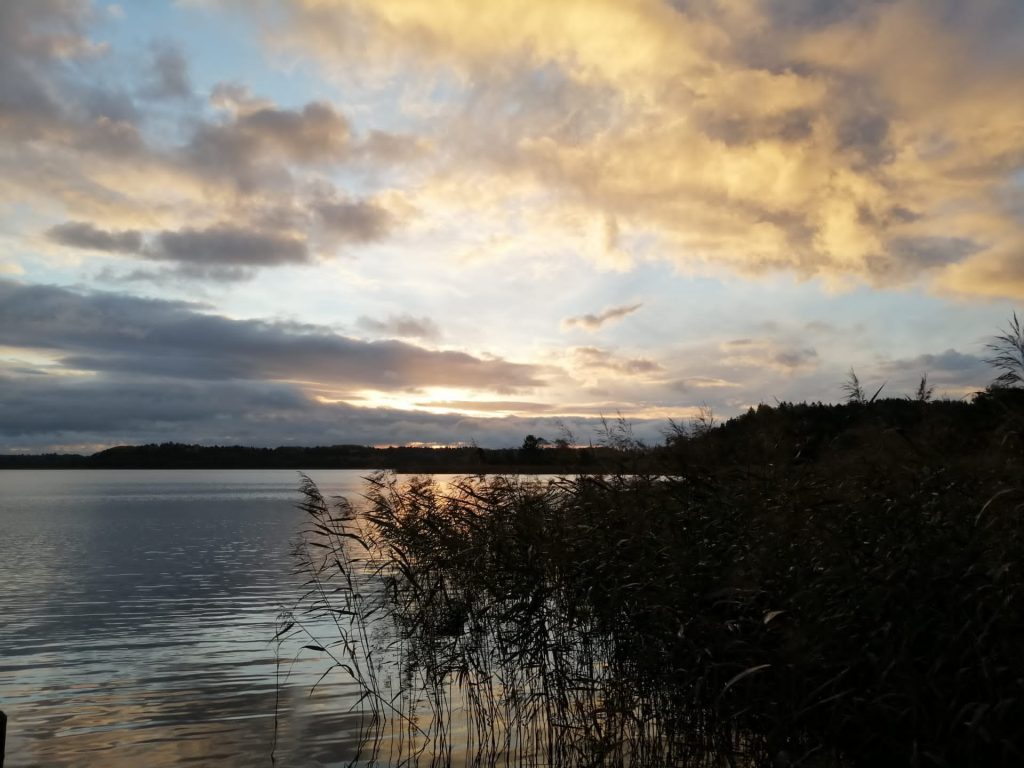
Photo by Emma Claeys
Landing in Ytterjärna
Now that I am writing this I feel fully landed in the place and the people around me (I think). It took a while though… I have lived in the city of Amsterdam for a long time and coming here I immediately felt overwhelmed by the surrounding nature. Die friedliche Natur kotzt mich an (something I learned from a German friend). Don’t get me wrong, it’s beautiful here, the trees, the lake, the birds, everything is so majestic. I appreciate it now. It calms me down a lot. Although, I did really love going to Stockholm on my second weekend. Our house is very beautiful too. I felt a bit nervous about having a roommate for the first time in years, but I am very lucky. My roomie is Dajin and she is the sweetest. Also she doesn’t wake up when I go to bed late 🙂
Landing in the people feels a bit strange still. I think we all had a feeling that we were going to be here for ten months anyway, so we got to know each other very intensely in the first week. I am still trying to figure out who I am in this group, but it feels good. Everyone is their own person completely and everyone counts here. I feel more and more at home and I am super excited to get to know everything and everyone even more.
By Emma Wulterkens
And suddenly it’s real. YIP14, Yttejärna, end of august 2021.
We arrived by car after 3 days of travelling from the Netherlands, stumbling into Pauline on our first step on the campus. Pauline is one of the volunteers this year, who welcomed us with a generous hug in front of the Honeypot. Next to the feeling of warmth, heart opening and coming home, landing on the campus felt like entering the grounds of Hogwarts. Together we headed towards Tallevana, feeling surrounded by fairies, trolls and goblins. Behind the magic door of the common room, 10 people who had already arrived welcomed us so warmly, that it instantly felt like I was meeting my family.
Following my Intuition, I discovered the beautiful gardens around the house, the Fjord, the forest, getting an overview of the magical place I just landed. My inner child was celebrating, expressing through handstands and cartwheels on the grass.
My body asked me to go to bed early, after the long journey. The next morning, after we practiced some yoga, Emma came in at half past 7. “Does anyone want to go swimming?” I am so grateful for that moment, because from that morning onwards, we went almost every morning; feeling ready and refreshed for the day.
I spent Friday unpacking and decorating my room, making it cozy and nice, getting to know others and welcoming new arrivals.
On Saturday, Simon and I went to Stockholm to play some music on the streets. We shuffled his piano through the city, and I brought my violin. A musician who passed by invited us for a gong bath but as Simon accidentally cut his finger on a glass bottle that broke in the backpack, he had to go to the hospital to stitch it. Christianne went with him, as well as the next day with Eva, who had to go to the hospital as well to be stitched, because she cut herself in the Fjord.
On Sunday morning we practiced for our opening ceremony contribution. Rehearsing a little performance, based on the song “hold me like a river.” Iren was a great leader and brought us all together. Feeling very excited and a little nervous, we went to the opening ceremony.
After the ceremony we had Fika together and I remember the moment Isabel asked me, “do you feel you are at the right place?” And I replied, my heart overflowing with gratitude and joy, “yes, definitely!”
By Carlotta Rosiny
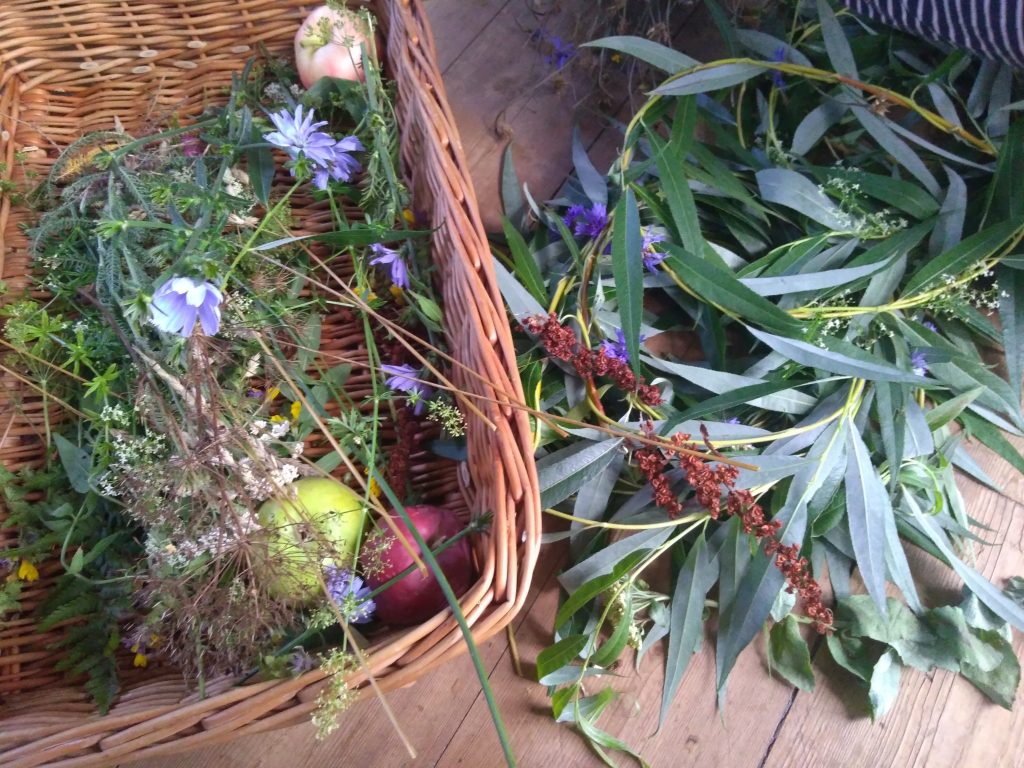
Opening Ceremony
Sunday, August 29th. 27 Yippies sit excitedly in a circle of chairs wondering when it will start. In the middle are two big bouquets of beautiful sunflowers in different colors, around us the members of the community and the Organisors of this program. We admire the wonderful vastness and beauty of this large building. We are in the Concert Hall of the Kulturhuset. Finally someone steps forward. It is Reinoud with his white cap and brown leather slip on, which we found out very quickly are quite practical here in Sweden. So off we go, Ami and Janne greet us, followed by other members of the community. Stories are told about this place, about the program and about what is to come. Happy laughter follows. In between, a musical interlude by a modern troubadour. Finally, the first participant is welcomed with a beautiful sunflower. After welcoming everyone, one by one, the stage is left to us. We have invented the desired presentation of our group during the last 24 hours and now we present it, full of joy and excitement. It begins colorful, diverse and also a bit chaotic (as our group is) and yet develops into a harmonious balanced song. After a rich applause, we go out into the sun, enjoy Kanelbullar, delicious apple juice and good conversations, where we can get to know the local people a bit better. What a good start to this year!
By Rike Altmann & Edda Richter
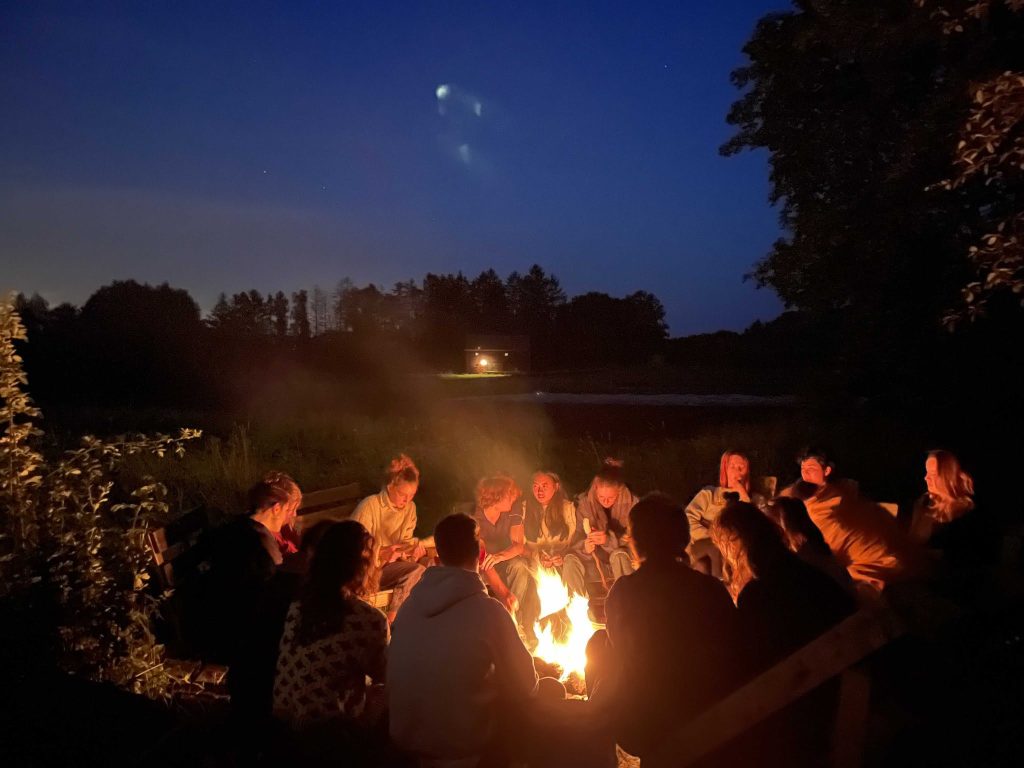
The First Week
After the opening ceremony on Sunday, we started our first week with a long walk on Monday. We walked past the biodynamic Nibble farm, Skilleby Trädgård and Skillebyholm. At our lunch spot by the fjord some of us went swimming, while the cows curiously watched. After lunch Reinoud gave us paper and pens to write letters to ourselves. ‘What do we expect, hope for and want this year?’ Thinking about my hopes I got even more excited for this year, as I looked around the group of people I would get to know and live and learn with. The following days were full of getting to know each other through games and other sessions led by the team. For a few of those sessions or during a break, people from the community joined us and we got to know them too. It was great to get to know the people who have lived here for years and to hear about the surroundings and them.
We also got more insight and details about our curriculum. On Wednesday, we heard about our creative sessions that we would be doing in our global realities block. This block continues until our autumn break and would bring Wednesdays full of creativity. In the session we got to meet our teachers for metal work, woodwork, textiles, art therapy and gardening. They explained what they do and what we would be doing if we chose their sessions and at the end of the session most of us were excited to start with our sessions. It was interesting that a lot of people were planning on choosing metal work, and they were insecure about there being not enough places in the course. On Friday, the group that wanted to choose metal work was indeed too big. It was solved the moment it was announced that woodwork would probably not come back in the block after inner awareness.
The week ended with our first community meeting and check-in groups. It was an intense afternoon full of emotions and listening. Our first week was done and already I felt like I had been here over a month, in a good way.
By Christianne Huisman
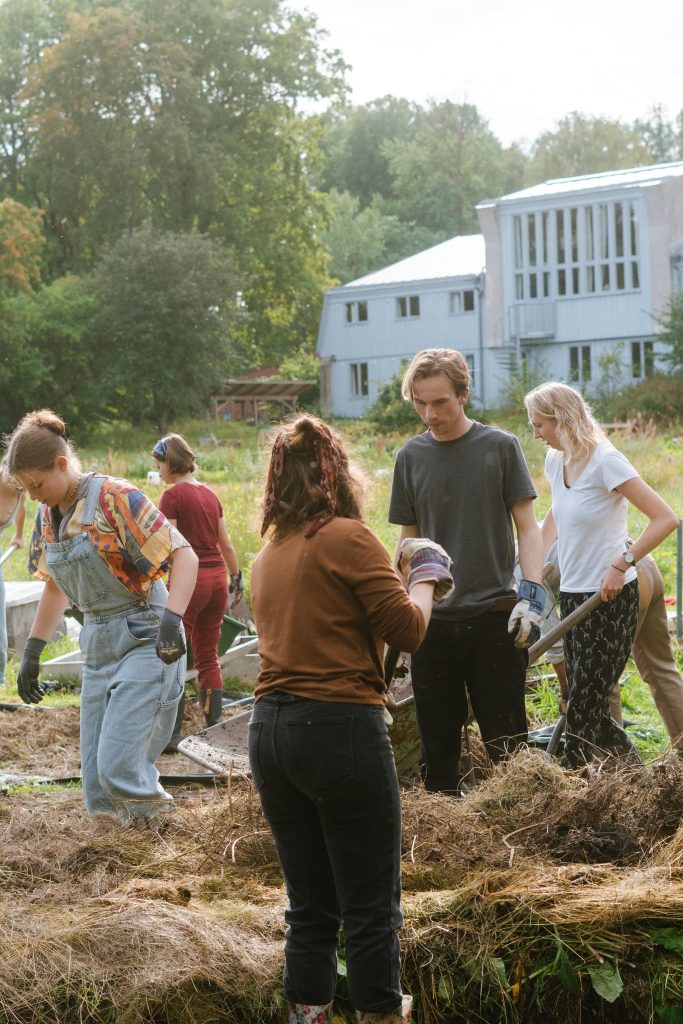
Living Systems: Soil, Food and Health
On Monday, Pieter took us out on a Deep Time Walk; a 4.6 km walk along the history of the Earth, where every step brings you 1,000,000 years closer to the present. We learned how our planet transformed from a stony landscape to the fertile soil we know today. Listening to all events that had happened in the past to make life on this planet possible, made me realise how magical our world is. It made me feel small, and very grateful for all the life that is present around me. Tuesday was all about connecting to ourselves and Gaia. We drew our feelings about the current state of our planet (lots of colours and circles), and wrote a letter to Gaia. I really enjoyed writing to Gaia because it allowed me to connect to her and see her as a living being, who gives generously but should also be taken care of.
In the afternoon it was time to get our hands dirty. We joined Brigid on the farm and helped her create a “compost lasagna” using apples, old compost, grasses, and greenery. Several times we encountered bugs, slugs, and even a baby snake. It was an uplifting exercise to learn about compost, as most of our thoughts were hung with impressions on how awfully we’ve treated our environment so far, and that man-made compost and our knowledge about soil could be a future part of our contribution back to the planet. From a historic point of view, we took a look at agriculture from past to present day, and the methods and techniques humankind developed to increase yield and profit from our crops. These unsustainable techniques have grown significantly in our modern day world, to the point where soil sustainability is not a priority, and the future of long-term agriculture is looking very bleak.
On Thursday, we talked about the role of animals in agriculture, and we touched upon the debate around veganism. Pieter explained the EAT Lancet diet, which is found to be the best diet for our planet, and healthiest for us. So, what’s best for our planet is best for ourselves (maybe we are Gaia…). Pieter divided the reasons for limiting or eliminating animal products from your diet into three categories: moral, environment and health. The moral question concerns animal welfare and the act of killing animals. What gives us the right to keep animals and kill them for our food? Can we include animals in a way that we value them equally? As one Yippie explained, she doesn’t want to eat meat because she would not be able to kill an animal herself. Also, the production of animal products obviously has an enormous impact on our environment, as we had seen earlier that week. Lastly, people limit their intake of animal products because of health reasons. In the end, we came to the conclusion that we need animals in our food system. The only question is whether we should drink their milk and eat their meat…
We ended the week with some inspirational examples of regenerative farming (Kiss the Ground,The Biggest Little Farm and Fantastic Fungi). It was a nice way to round off our second week of YIP, because as Pieter asked us, what is the story you want to tell?
By Tessa Van Ruitenbeek & Anika Jensen
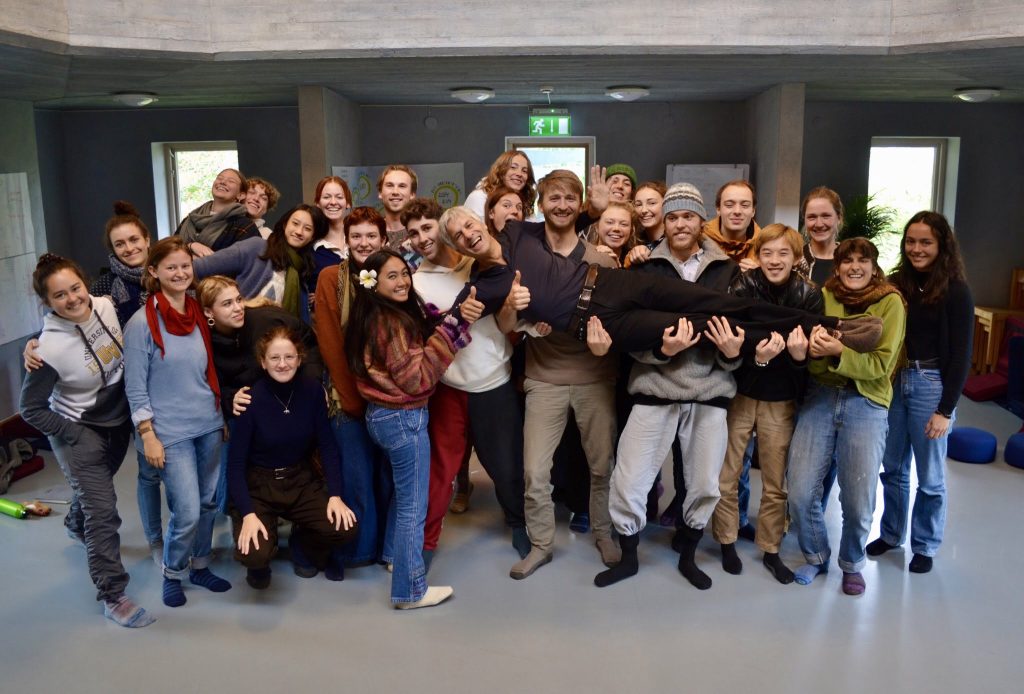
Governance & Activism
Activism
The second week of YIP introduced the yippies to two focus topics, activism and governance. Monday followed Extinction Rebellion climate activists Samuel and Sofia, whilst the rest of the week was held by Gerald Häfner, one of the founders of the German Green Party and three-time member of the German Parliament. The yippies explored many questions during the week, including the importance of well-being within activist communities, whether the current forms of government are still serving the collective good, the history of power, the necessity of laws and how to make positive change in the world.
Monday’s session began with Samuel reflecting on the monumental achievements of activists such as Rosa Parks, the suffragettes and Gandhi, to name a few. He also touched on violent versus peaceful activism, how these relate to real change in society and what happens when you are peaceful, but the opponent is not. Samuel and Sofia reiterated the importance of protesting for the many, rather than for personal gain and questioned whether fighting for the cause is worth the disruption it produces for the general public. As a group, we also discussed the media and its ability to sway popular opinion on certain activist groups and the subsequent impact of this.
The yippies were asked the questions: When is it right to break the law? Why should we be non-violent? There was a sense of general agreement that civil disobedience is necessary when the law is not serving the common good and if legal protest has not worked. Many of the yippies reflected on the privilege of gentle punishments for arrest in their own countries and how this freedom is not the reality for many people living under authoritarian dictatorships in other places in the world. Ultimately, peaceful protesting is a privilege and not an option for those in more vulnerable positions, like those in danger of losing their ancestral land to the building of an oil pipeline, with no money or influence to fight back.
Samuel and Sofia then got the group on their feet to practice confrontation between activists and the police. This exercise was uncomfortable for many of the people in the room, highlighting the importance of affinity groups and the need for a regenerative culture in activism, which helps to avoid burn-out and lessens the negative impact on wellbeing. The questions that stayed with me after the session with Samuel and Sofia were: How can we come together through activism to create positive change, whilst still remaining mentally well? How can we (as a majority white and privileged group) support the causes and give space to indigenous people who are suffering injustices in the world?
By Matara Scott
Governance
The rest of the week was spent with Gerald Häfner, co-founder of the German Green Party and former German multi-term Parliamentarian. He now works with the Anthroposophical Society and with many social initiatives across the globe, and we were absolutely honoured that he spent a week teaching a slightly chaotic and deeply fascinated group of international young people about democracy and freedom.
He started the week by hearing our questions – what does a healthy society look like? What is it like to be a politician? Does protesting really work? Our questions were diverse, broad, highly specific, emotional, and confused about the nebulous topic of politics overall. Gerald took us back to the very beginning of time, starting with the loss of Paradise and the eating from the Tree of Knowledge.
Through analogies, examples, and history, we developed a basic understanding of the way that human consciousness has evolved over time, from great unity with each other and the spiritual world, to the loss of grace and gaining of knowledge and rationale. We learned about structural societal shifts from theocracy to monarchy to early Democracy and recognized that the growing impulse toward spirituality and freedom in modern times must be reflected in the way we make our laws and govern our society.
Gerald asked us, are laws necessary? We eventually answered, yes, agreeing that laws and rules stand in the place of constant communication. For example, a traffic light is made much more efficient if everyone follows the law instead of discussing who crosses when. Laws, we found, must be the same for everyone: the governing principle of the realms of law is equality.
Through that understanding, we briefly discussed the other two realms of society: culture and economy. Culture must be absolutely free, said Gerald, the guiding principle of which is individuality, while economy must be collaborative and law/rights/policy must be equal. Through this new holistic understanding we focused on the nuances of equality and representation, discussing in detail why and how our current political structures fail to deliver on both of those needs.
As individualism grows, it becomes less and less possible to represent each person, thus our representative democracy becomes less and less effective. Democracy must shift to allow citizens to contribute directly on ideas and issues, rather than leaving decisions to elected officials. This is a total reinvention of democracy, known as “direct democracy,” and those of us used to less effective governments were immediately sceptical that this idea would actually work. But we learned that democracy is a living being, and that direct democracy is the only way to engage citizens in their own governance. Change is limited as long as the decisions lie in the hands of the few.
He then asked us to ponder what each of us, as individuals, want to change in the world and what we could contribute. He had brought us from the very beginning of time through the present and into the future, and from the individual microcosm to the societal macrocosm. He gave us a new lens through which to view the political realm and inspired us, with his dedication to his values and uncompromising integrity, to enact whatever change we felt called to create with the same high level of groundedness and candour.
It was surprisingly touching and transformative to see before us a politician who had devoted his life to the issues we all care about. Our conversation around politics changed, and we understood that politics and law touches culture, economy, environment, social fields, and everything else that we care about both as a group and individually. Through Gerald’s work, our thoughts on politics turned from a difficult and discouraging conversation into a new opportunity to enact genuine and grounded change in the world, one individual at a time.
By Iren Barnum
